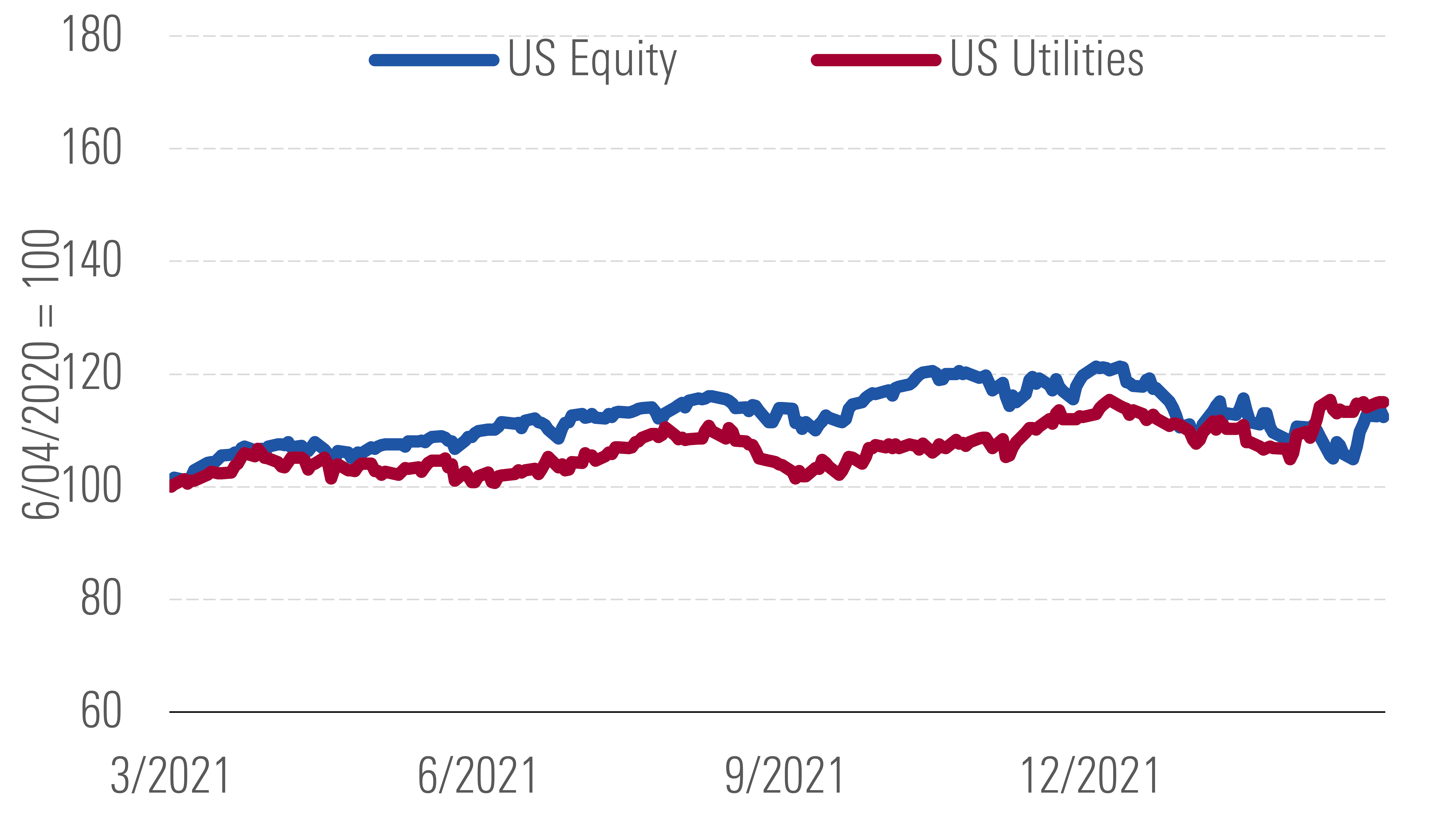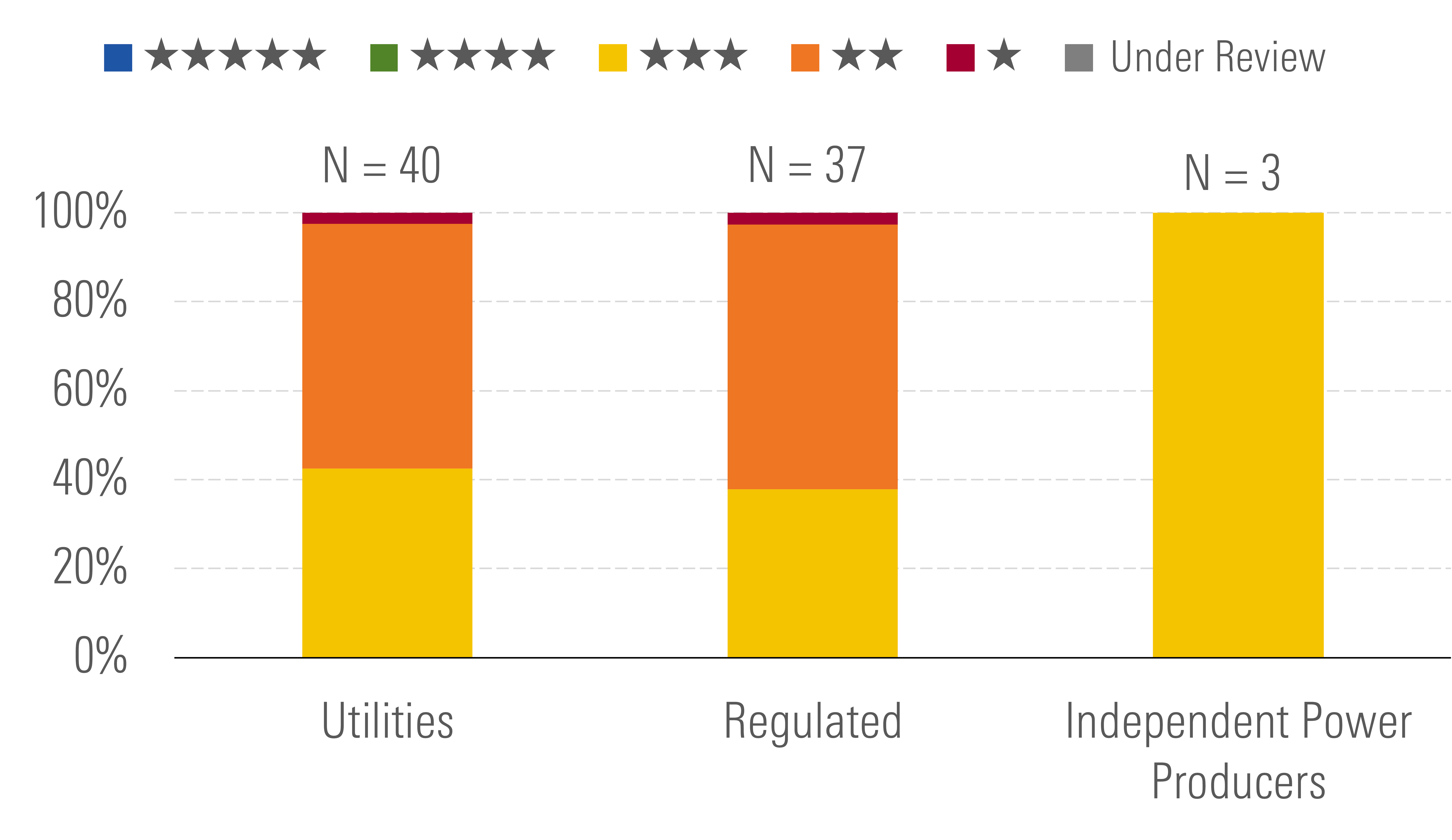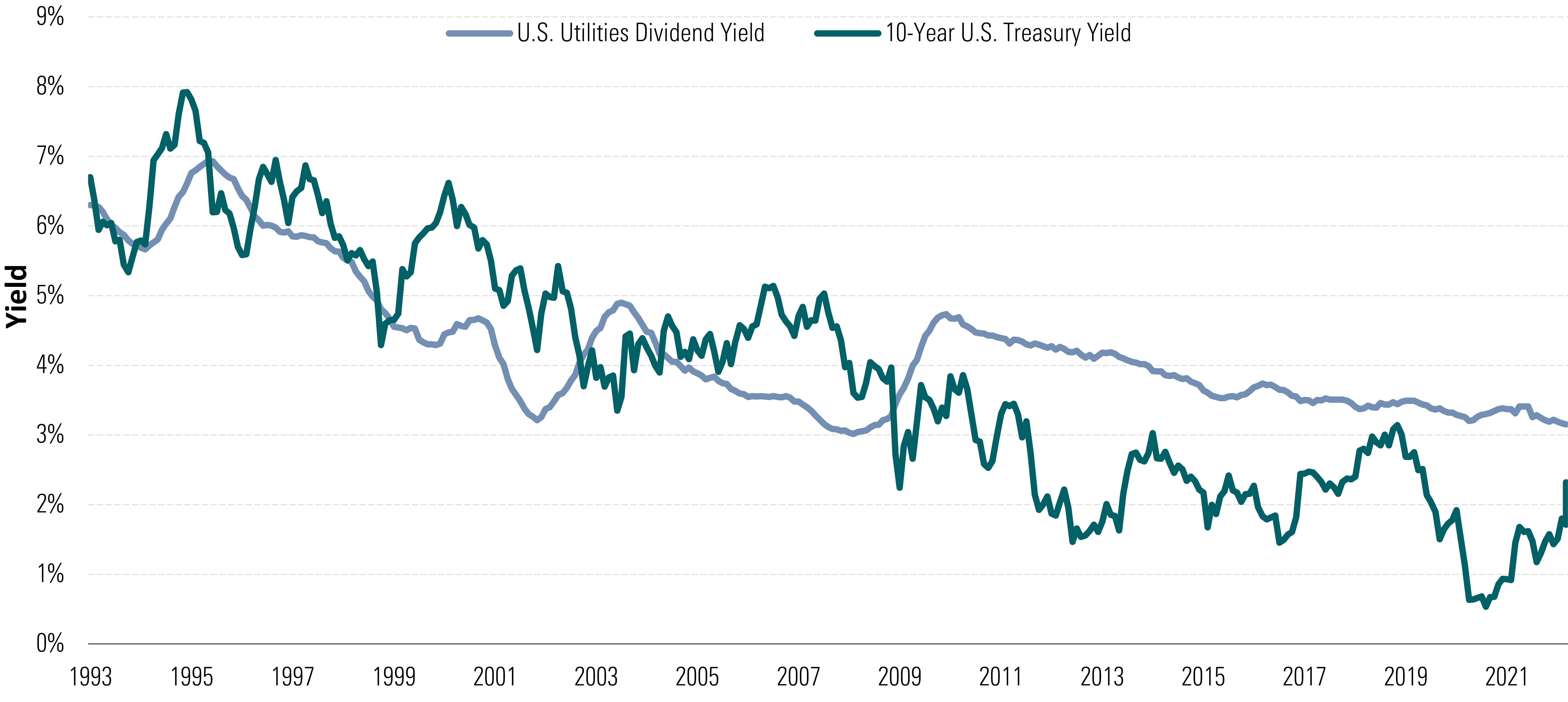If High Inflation Persists, Utilities Investors Should Prepare for the Worst
The sector is 11% overvalued, and no companies trade below fair value estimates.
Before the Russia-Ukraine crisis turned investors defensive, we got a glimpse of what can happen to utilities when the market frets about high inflation and prolonged interest-rate increases. Utilities gained 2% to start 2022 after successive monthly reports showed inflation hitting multidecade highs. The market’s defensive turn in March erased those losses, but we think that initial plunge shows how far and fast utilities could fall if inflation remains elevated.
Exhibit 1: Inflation worries sank utilities before the market turned defensive.

- source: Morningstar
We think the market is mispricing this inflation risk for U.S. utilities. We consider the sector 11% overvalued as of late March. None of the 40 North American utilities we cover trade below our fair value estimates. Valuation multiples remain well above 20-year averages. Another quarter or two of elevated inflation—including higher energy prices—could hit utilities' earnings and growth prospects. Utilities haven't experienced this inflationary punch in several decades.
Exhibit 2: Utilities' rich valuations don't reflect downside risks.

- source: Morningstar
We think income investors should be cautious, as well. For the first time in at least 30 years, utilities' inflation-adjusted dividend yield has turned negative. U.S. utilities' 3.1% median dividend yield is still attractive relative to interest rates and the total market, but that yield premium is quickly evaporating. Utilities’ dividend yield offered a 200-basis-point premium to the 10-year U.S. Treasury yield as recently as August 2021. Now that premium is just 80 basis points, the smallest since early 2019.
Exhibit 3: Higher interest rates have chopped utilities' dividend yield premium.

- source: Morningstar
Politicians, regulators, and utilities could face a difficult choice in the coming months. Low interest rates and low inflation have made it easy to push clean energy investments. We think public policy will continue the push toward clean energy, but higher costs for renewable energy and rising customer bills could slow clean energy growth. This could be a drag on growth for many utilities. We think the combination of higher interest rates and inflation could slow utilities' annual earnings and dividend growth to the low end of our 5%–7% forecast during the next four years.
Exhibit 4: Utility bills have stayed mostly flat while capital investment grows.

- source: Morningstar
Even with a clean energy growth tailwind, we think utilities investors should prepare for lower returns ahead. Once investors start looking for inflation protection and other income options become more attractive, utilities could face a steep fall.
Top Picks
NiSource NI Star Rating: ★★★ Economic Moat Rating: Narrow Fair Value Estimate: $31 Fair Value Uncertainty: Low
NiSource's transition from fossil fuels to clean energy will support growth into the next decade and reduce its exposure to natural gas. We think this is an opportunity to buy a high-growth utility while the market worries about the long-term viability of natural gas, which is 60% of its earnings. Its electric utility, which contributes 40% of earnings, plans to close its last coal-fired power plant in 2028 and replace the generation with wind, solar, and energy storage. We expect NiSource to invest $12 billion over the next five years, almost 50% more than the previous five years, leading to 8% earnings and dividend growth.
Edison International EIX Star Rating: ★★★ Economic Moat Rating: Narrow Fair Value Estimate: $71 Fair Value Uncertainty: Medium
With the stock trading at a discount to its peers and more than a 4% yield, Edison offers value, growth, and income. Despite California's ever-present political risk, the state has progressive energy policies and regulation that support Edison's $6 billion annual investment plan to harden the grid against natural disasters, integrate renewable energy, and support electric vehicle adoption. We forecast 6% annual earnings growth for at least the next five years and similar dividend growth. Edison is one of the few pure-play electric utilities that owns no power generation and has no direct fossil fuel exposure.
WEC Energy WEC Star Rating: ★★★ Economic Moat Rating: Narrow Fair Value Estimate: $94 Fair Value Uncertainty: Low
We forecast nearly 80% of WEC Energy's earnings will come from investments in Wisconsin and interstate transmission with highly constructive regulatory rate support. In Wisconsin, regulators set rates based on forecast costs and allow shareholders to benefit from cost savings. Management has a history of managing regulatory relationships well and achieving operating efficiencies. This results in returns on capital that are consistently above peers. We expect the company to invest $18 billion during the next five years, supporting 7% annual earnings growth.

/s3.amazonaws.com/arc-authors/morningstar/ea0fcfae-4dcd-4aff-b606-7b0799c93519.jpg)
/cloudfront-us-east-1.images.arcpublishing.com/morningstar/IORW4DN3VVC3BC4JO7AQLSJTF4.jpg)
/cloudfront-us-east-1.images.arcpublishing.com/morningstar/ODMSEUCKZ5AU7M6BKB5BUC6G5M.png)
/cloudfront-us-east-1.images.arcpublishing.com/morningstar/TGMJAWO4WRCEBNXQC6RFO5TOAY.png)
:quality(80)/s3.amazonaws.com/arc-authors/morningstar/ea0fcfae-4dcd-4aff-b606-7b0799c93519.jpg)